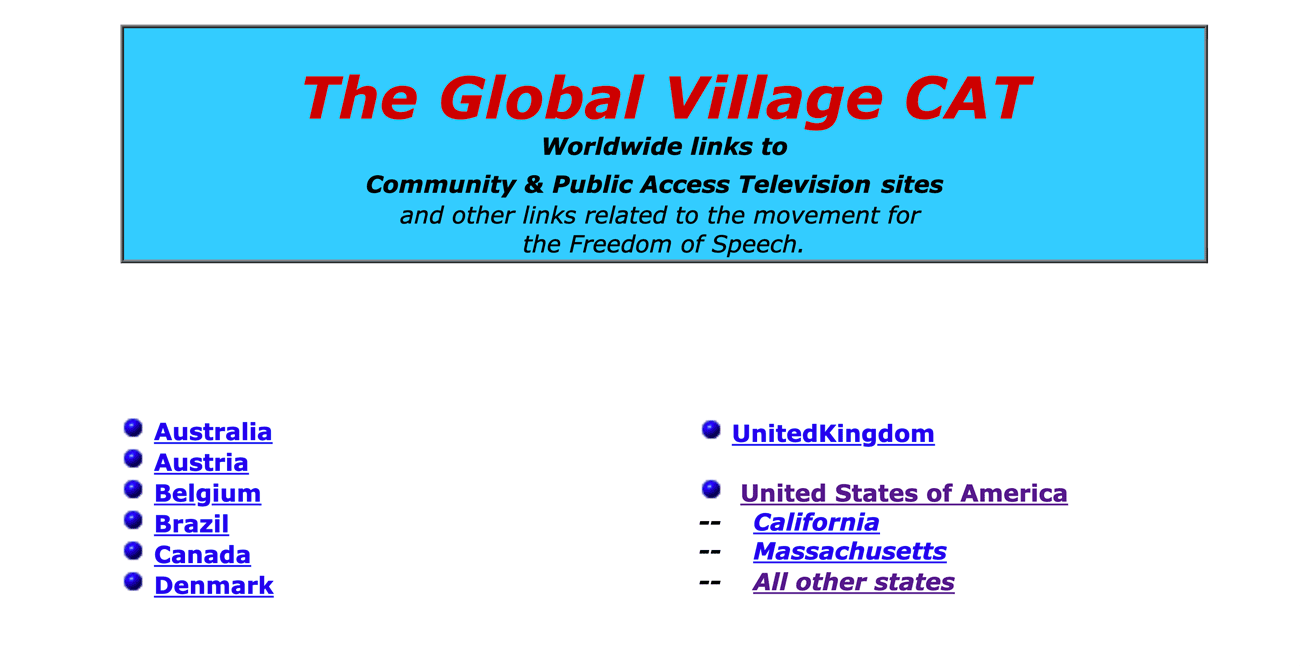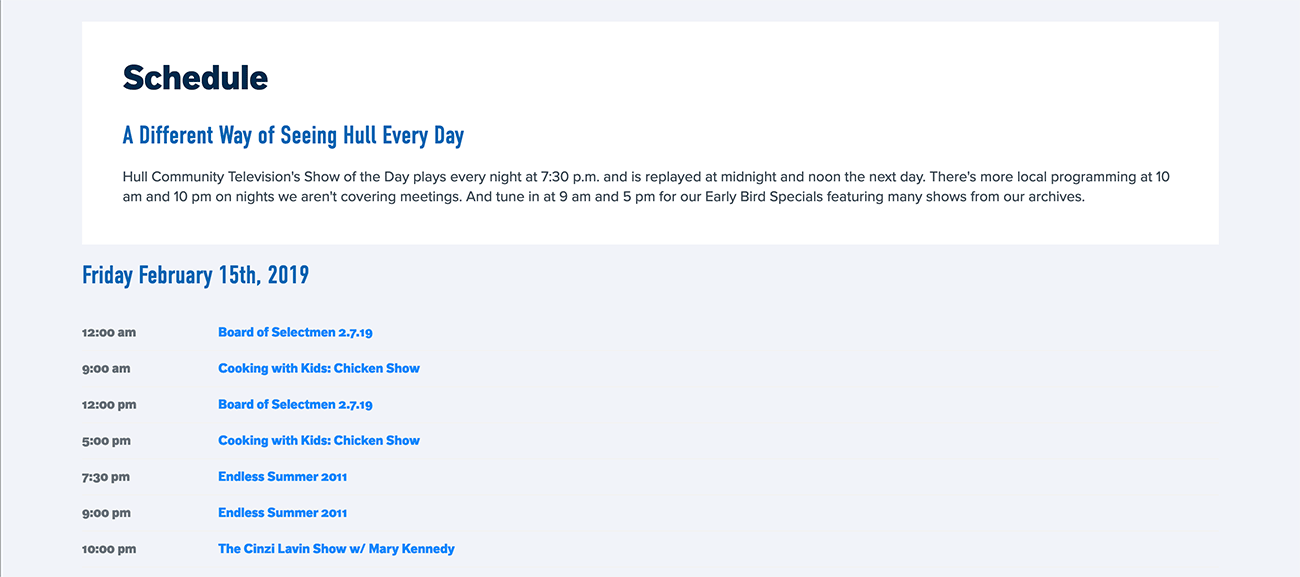How to Get Your Sports Team on TV and Land Sports Sponsorship at the Same Time

When looking for ways to increase sports sponsorship and attract more interest in your sports team, an obvious option is to appear on television.
It may seem like an impossible dream, but it’s actually far from it.
A too-often overlooked option for producing content (and for free!) is to contact your local TV network. Public or community access channels exist as an opportunity for the community to air programming they care about.
A piece on the local sports team definitely fits the bill.
In this post, I’ll share how to get your team on the local TV station to increase your viewership and how to leverage that to get more sports sponsorship deals.
What Kind of Access?
If you’re one of the few people without a television set in your living space, this may come as a surprise: public access television is a free community channel that airs programming created by members of the general public.
This system came about in the 1970s as a requirement for cable companies to set aside certain channels for public, educational and governmental use.
Think of it like YouTube on your TV. Public access content doesn’t even have to be polished like a professional TV show. People are aware that it’s locally-produced and won’t be über-high-quality.
Networks are also actively looking for content from their local community so it’s not as difficult to get your show accepted as you may think. But, programming is dependent on the station’s program restrictions and schedule.
A caveat you should note is that this airtime is non-commercial so you can’t use the time to sell season tickets or create one giant commercial. Fortunately, human interest stories and content often work better to convert viewers than a straight-up sales pitch.
How to Get Your Show on a Public Access Network
The crew at these stations are used to working with laypeople and helping them broadcast their projects – that’s what they’re there for! But, if you can learn about the process beforehand, you’re that much better suited to use the opportunity to its fullest potential.
Starring on the Small Screen
The very first step toward getting your program on TV is to decide on a channel.
Figure out what public access stations exist in your area. Not every city has one so you may have to look state-wide. This can be accomplished with a Google search or you can check out any of the lists below:
- Public Access Television Stations and Media Centers
- List of Public-Access TV Stations in the United States
- Community Radio Broadcasting Licences (Australia)
You can also ask around at events that cater to your target demographic: what public access programs do people in your community watch and enjoy? Is the community aching for any sort of particular content — some comedy or uplifting stories, perhaps? A little consumer research can save you a lot of time in the long run.
It may be important to note that most public access stations have residency rules. You must live in the community in order to have a program on the air. Be sure you inquire about the specifics with the station to which you’re applying.

Gathering the Details You Need
Before you begin your journey, you have to start simple and figure out the type of content that really thrives on the station. Each station will have its own requirements for what content it can air and how to submit it. So, gathering those details is a key step.
If you’re not sure where to find this information, the station’s website is a good start or you can call their main contact number.
Typically, there will be a sheet with guidelines for file-sizing, any content restrictions and outlines to follow when creating your content. The station wants you to do well and succeed so make sure to use whatever advice and rules they lay out for you.
Getting into Gear
Depending on the station you’re submitting to, you’ll likely need to attend some sort of orientation or production training classes before you get started. This is typical if you’re using equipment provided by the station.
The station is typically run by a cable or third-party company, and that company is expected to provide the gear and knowledge that is necessary for producing television programs. Some stations have video production classes you can take.
When producing your content, there are two routes to take, depending on the resources available:
- Use the station’s studio and equipment to film your show.
- Produce the content yourself, especially if no studio exists in your area.
If you have media-savvy people in your organisation already, chat with them about what’s possible. They may be able to recommend the best scenario for your project’s scope.
If you don’t know anyone in production, the station should be able to make some recommendations for you.
Figuring out Your Pitch
When formulating your pitch to the TV station, you need to make it as easy as possible for your project to be chosen.
Each station will require different submission guidelines, but the most basic requirements will typically be a title and a description of your show.
Here are a few more things to think about when developing your show idea:
- What is the objective of the show or series?
- How long will each segment be? Will there be one or multiple?
- How can you tailor the show to the community and ground it to apply to the people who live there?
- If you’re going to integrate sports sponsorship, how will that occur? Many stations have rules about only sponsor-related words or pictures being shown to prevent the content from going commercial.
Usually, you have to submit a finished program for viewing. This way, someone from the station can make sure it fits the guidelines of the channel. Once that’s all approved, you should get a time slot for your program to run.
Next step: advertise!
Content Ideas
In order to get a large number of viewers (and hopefully a sports sponsorship or two), you’ll need to have some quality content ideas that people want to tune into.
Here are a few suggestions to get your brain churning:
- Take a camera operator along on an adventure and film a day in the life of one of your star players. Social media can only capture so much in small spurts. A long-form version of that content could definitely draw a crowd.
- Are you gearing up for a big tournament or in the midst of playoffs? Create a series leading up to the big day. Viewers will love watching players gear up on and off the field.
- What don’t people know about your players and staff in terms of secret talents or surprising facts? A “Get to Know the (insert your team name here)” segment could turn some heads.
There are a number of great possibilities you can capture with a camera. Start by filming the team at special events and see what comes of it. Using your smartphone will do the trick.

Upping Your Sports Sponsorship
Of course, exposure on the small screen helps with engaging fans. But, let’s not forget about those sponsors who support the team and make it possible to get through the season.
Mentioning your program on the public access channel is also a great draw to put into any and all sports sponsorship packages you send out.
While networks have certain commercial restrictions as previously mentioned, you may still be able to show sponsor logos on team jerseys and in other similar ways.
Your local access network should be able to provide you with the specific details you need so you can come up with advertising ideas that would be approved.
Let your current sponsors know you’re creating this project and also that you would love to feature them. Maybe they can offer up some media production assistance or contacts to help it go well.
You should also mention the possibility of uploading your show or series to YouTube after the broadcast.
Online, anyone can watch and see the sponsor’s logo paired with the team’s content. YouTube does have commercial content restrictions, but they’re far more lax in terms of putting up a slide at the end thanking sponsors with a logo.
Level Up Your Sports Sponsorship Packages
If you really want to get varsity with this, think about sly ways to insert your sponsors naturally into your segment with product integration.
For example, if your sponsor is a retail store or a pizza joint, you could have members of the team drive by the shop on their way to practice or stopping at the local pizza place after a game.
The more you can offer to your sponsors in terms of content, the more sports sponsorship offers you’re going to receive.
Bring Down the House
Although getting your sports team on television may seem like a daunting task, public and community access programs have made it as easy as possible to pull your program off without a hitch.
It’s certainly worth your while. The more viewers you can get, the more sports sponsorship opportunities can come your way — a victory everyone can cheer for!
Have you ever embarked on a video production project for your sports team? What other media have you used to increase your sports sponsorship? Do you have a favourite public access channel you watch at home? Let us know over on Twitter or Facebook!
